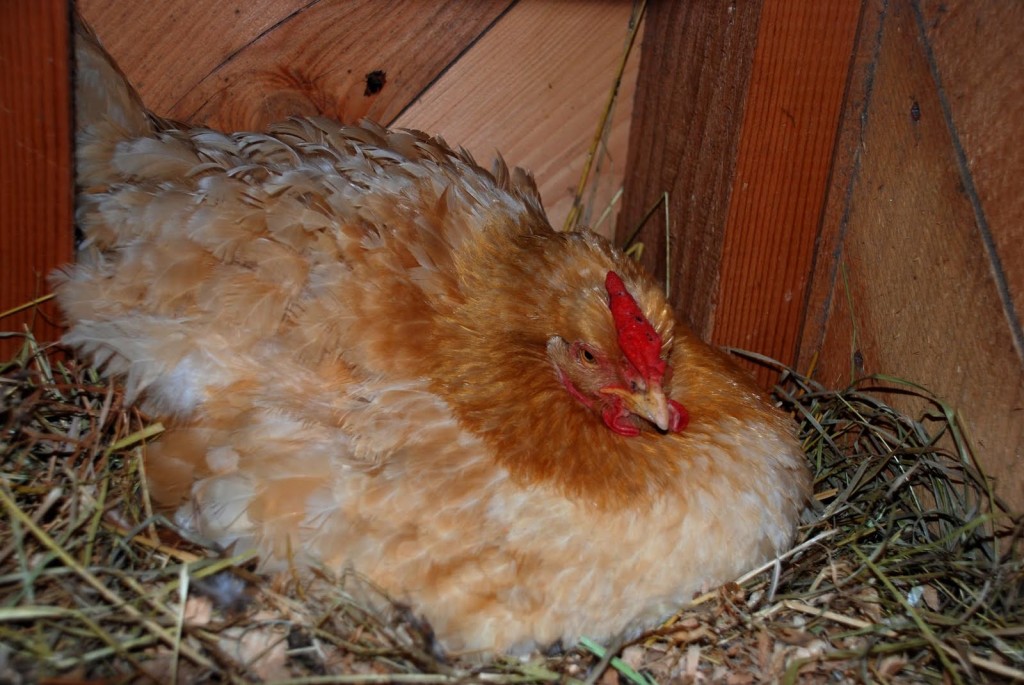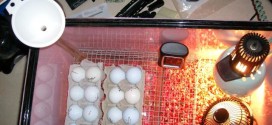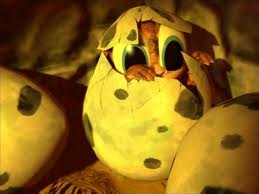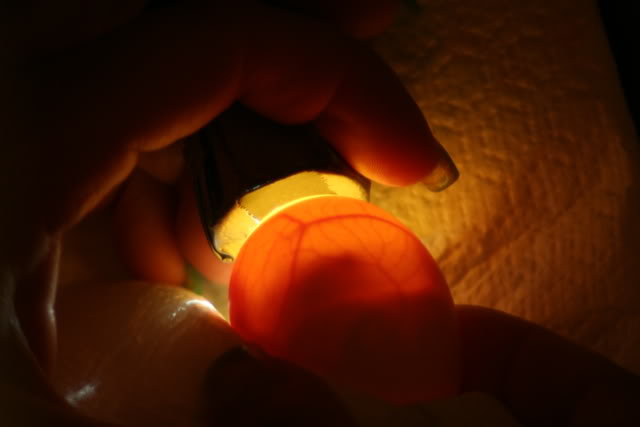I have a vast experience of handling 2 dozen babies at the same time – you must be thinking I have gone crazy, or just looking around; however, this is true. Babies, I am talking about my fluffy, cute and fatty hens here. When it comes to hens all the activities are fun – feeding, bathing but more specifically, I can guarantee hatching chickens is just wow! The artificial incubation is not fun because you do not get to see a different behavior and feel attachment. The excerpt in detail highlights how to hatch chicks naturally under a broody hen. In addition, it would explain about the best brooding types of hens and their habits.
What do you think?-can an egg-laying hen would go broody? Well, that is not strange at all because it happens most of the time, especially during early summers and spring. Many backyard raisers particularly grab the fresh chicken eggs early morning so that they can sell it for money. In contrast to this attitude, many want to refresh their flocks frequently and use older chickens for flesh and money. Therefore, they let the mother hens sit of the cluster of eggs for some time so that they can get cute little babies.
Where to find a Broody Hen:
Truly, if you want to get chicks that mean you need fertile eggs – it also means you need a rooster. The second issue is hatching because you need a brooding hen for that. Not all the breeds are that way because chickens are one hell of moody creatures. Not only many farmers claim the same but also the researches have proved that some breeds of chicken are more likable for breeding. Have a look;
Buff Orpingtons:
Any idea, which breeds, is known for its broodiness. It is not wrong to say that mama hen of this breed is very loving and adores the chicks. Interestingly, you will not ever face trouble in letting this hen go for brooding; in fact, it does not mind to hatch the eggs that are not laid by her.
Other breeds:
Brahmas, Silkies, Australorp, Dark Cornish, Buff Rocks, Turkens, Cuckoo Marans and Bantams are even among those types that easily go for brooding. However, they may not be the ones, which are likely to sit on the cluster of eggs, which are produced by some others.
However, not all the hens are very good broody as it is a trait that is natural and cannot be acquired. They may even contribute of lesser or failed to hatch properly (so you select to break the broodiness of hen).
Signs of brooding:
Many times newbie’s or new backyard players get into chaos when the hen is about to brood. They fail to spot the common differences between a sick and a broody hen. Let us end this mess by clearly looking into the signs of broody hen;
- Hen starts to peck hard when you try to reach her nest
- Examine her behavior – she must be looking comfortable yet very alert about the environment
- She must be fluffing her feathers, especially the neck area. You would be certain to hear a very sweet noise all the time.
- Keep a look at the nest, if it has line of feathers, it clearly shows the mother feeling on her is on the top
- Leave the nesting box shortly to eat, drink and poop.
Essentials of a broody box:
A brooding box is a private place of a broody hen; therefore, it is supposed to be comfortable and cozy. Moreover, it is supposed to be safer so that the hen does not feel insecure otherwise, she would act strangely.
The hatching process:
Normally, the duration of hatching an egg is almost 21 days. It may be a little more or less as per the breed of the chickens. You must candle the egg after few days to determine the viability of an embryo so that infertile eggs can be separate out.
Stages of egg development:
Day one:
- Within 16 hours there is existence of the chick embryo
- Eighteenth hour – alimentary tract develops
- Twentieth hour – vertebral column develops
- Twenty first hour – nervous system starts to develop
- Twenty second hour – head starts developing and by 24th hour eyes are developed
Day 2:
- Twenty fifth hour – heart starts to develop
- Thirty fifth hour – ear starts developing
- Forty hour – heart beat starts
Day 3:
- The 60th hour – nose develops
- 62nd hour – legs develop
- 64th hour – wings develop
Day 4:
- Tongue develops
Day 5:
- Differentiation of sex and formation of reproductive organs takes place
Day 6:
- Peak develops
Day 8:
- Feathers develop
Day 10:
- Beak starts getting harder
Day 13:
- Claws and scales develop
Day 14:
- The embryo starts moving in a manner that it can be get out of the shell
Day 19:
- Yolk starts to enter the body cavity
Day 20:
- The embryo is big enough to occupy the entire shell space
Day 21:
- The chick hatches





Thanks for this information it is great. I have two hens that will set and are great with the chicks. But my boxes are up off the ground and last yr we lost some I think because they couldn’t get down and get to the water and chick food in time so we started taking them in under a heat lamp until they got bigger and what a job that is. So this year I built a box closer to the grown with a walk way to it and I can not get her to set in it she always goes to her old box. So I was thinking abount putting a screen door on the new box to keep her in there with water and food and the eggs. Will that work.
The chicks can survive upto two days without food and water after being hatched so after first hatch of chick on 20th or 21th day you can wait for one more day if you like to ensure all remaining fertile eggs are hatched(normally all eggs should be hatched from 19th to 21th if kept on the same day) day after that you can move them down the box,regarding your second option I would like to share my personal experience with you what I did.I used a plastic round bucket,put some straw,kept eggs on them and place it in the nesting box where she sat immediately than move the bucket to other dark area after some hours but she ran away to her nesting box,I did the same second time and this time it works! and she got familiar with her second place.
I’ve been hatching under hens (as well as incubating) for years, and after having lots of problems, I’ve worked this system out: When a hen acts seriously broody, (several days to a week), I wait till dark and move her to a big wire brooding cage with just a couple eggs. If she has settled down on them by the next morning, I give her the rest of the eggs (however many she can cover well). If you leave her in the flock, all kinds of things happen…two broody hens fight and get confused and sit on the wrong nest, letting eggs go cold; eggs get broken in scuffles; and of course, you are continually sorting new eggs from the eggs you are brooding. (If you are letting a hen brood in a common area mark the eggs!) Although odd hens of any breed may go broody, I rely on a couple breeds to supply a lot of my broody hens. My favorite are Salmon Favarolles, which I like because they are a little smaller (feed economy) and are good winter layers.
We let a broody hen hatch out some eggs this past spring and it was so fun to watch! I had never seen a mama hen raise chicks before and really wanted to experience it, so we let her hatch out five eggs. It was so neat to watch her show them the ropes and take care of them. Amazing experience!
Very true,It’s always fun to watch chicks with her mama hen especially on the 20th or 21st day when they came out from eggs by breaking the shell,and when her mama pick some think and call her babies to eat,when she brood them under her wings,ride up on her mama back…..all amazing!,showing mother’s love for her chicks.
I have a black australorp who hatched 15 chicks, when will it be the right time to seperate mama hen from her chicks?
Wow! it sounds like good hatch i.e 15 chicks.Let nature takes its course,Let their mama to decide when to separate them.When she is ready, she will start gently pecking them to leave her alone. She will also stop clucking to them for food and just eat it herself.I would not suggest to separate them until their feathers are grown up and start to eat by their own(at least 6 week),It would be better to let her to introduce her chicks to the other flock before starting to separate.
Hi Farhan, I’m a complete novis to keeping hens. I have a mix of five girls and a light Sussex cockerill who has been doing his deed. A speckled hen has sat on a gathering of 14 eggs, each laid by different girls and I have had mixed outcome. Two chicks died and two have survived quite well. The oldest one is now seven or eight days old but the hen is still sat on the rest. I picked one up last night and the chick inside is cheeping but the others are very quiet. What should I do?.
Thanks alot, i guess i have to be patient on that.
Will hens mother chicks if they are hatched in an incubator?
I have no broody hen. I have about 19 hens, and not one of them will brood. My farming partner had a broody Buff Orfington, but all of the babies she hatched died in the first couple of days, and now she will not brood either.
So, sadly we have turned to the artificial brooding method. I wasn’t sure if I could put these guys with the Hens once they hatch, or just raise them artificially?
Thanks
Well! seeing mother hen with chicks jumping,running and eating not only looks so adorable! but you don’t have to worry about those little cutties as she take care of them in all way.But hen’s broodiness and mother’s like nature vary from breeds to breeds so one can’t say with surety whether she will adobe them or not,the chances are fifty fifty! In addition to this they may be prone to die if the hen is not cheated well!! If you’re willing to do so,put some artificial eggs under the broody hen to feel her sitting on eggs and then replace eggs with chicks in the night after a few days and keep an eye on them early in the morning so you can quickly rescue them in need.
The most broody breed I have found is the Cochin. Every time I had a hen sit -it was a Cochin. I have had a Cochin sit on many eggs -from the whole flock. Another time I had a Cochin sitting on unfertile eggs-so I was able to sneak hatchery chicks underneath her & remove the old eggs. I didn’t know how many chicks a hen could mother -so I gave her a dozen & she did just fine.
Question: I have eight eggs in my incubator, due to hatch in two days. One of my seasoned (a great mama) bantam hens JUST went broody, which we discovered last night while putting everyone in the flock to bed.
I’d much rather my hen raise the babies, but if they start hatching just two days after she’s gone broody, will that work?